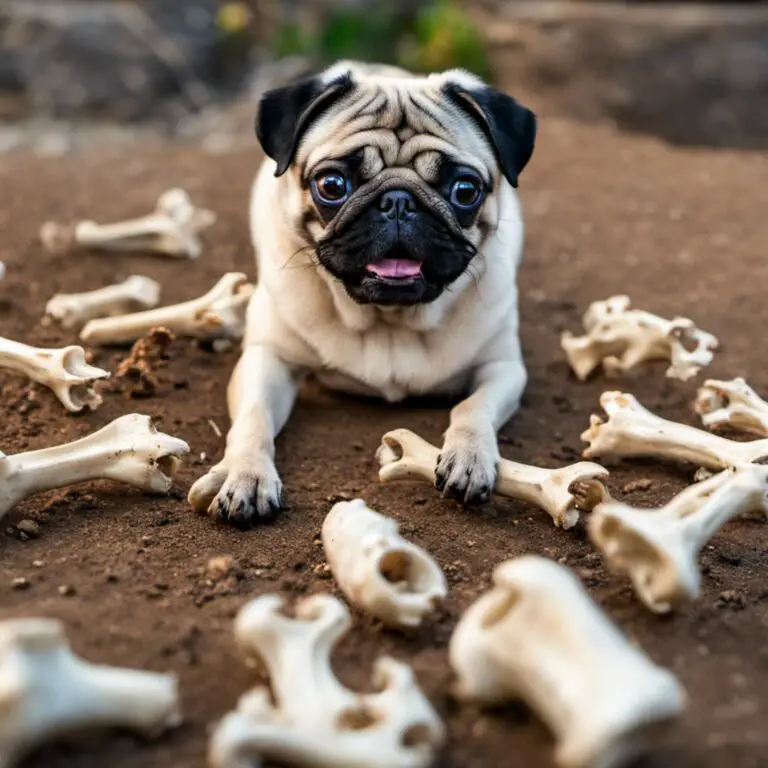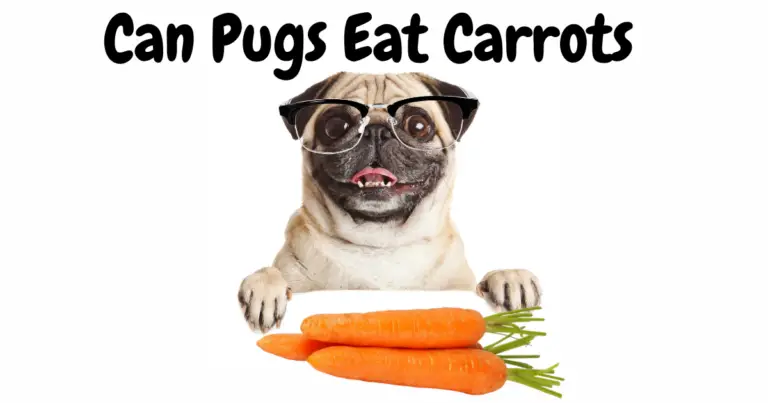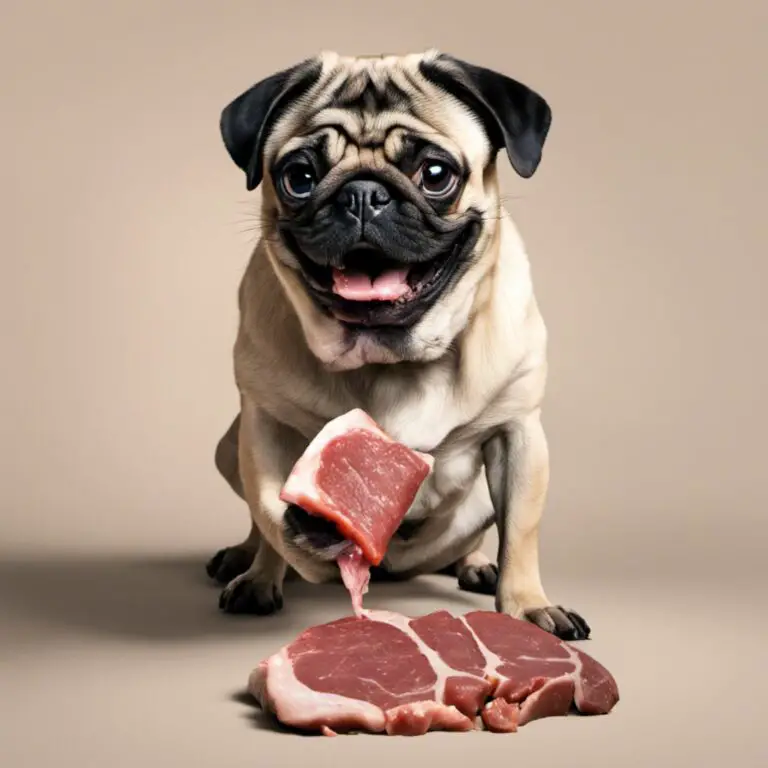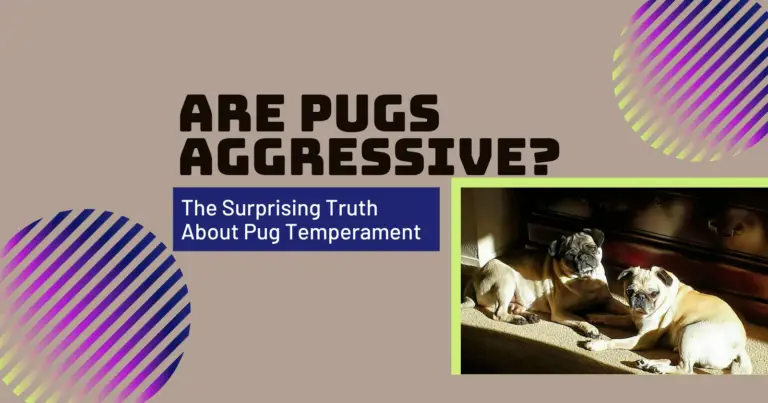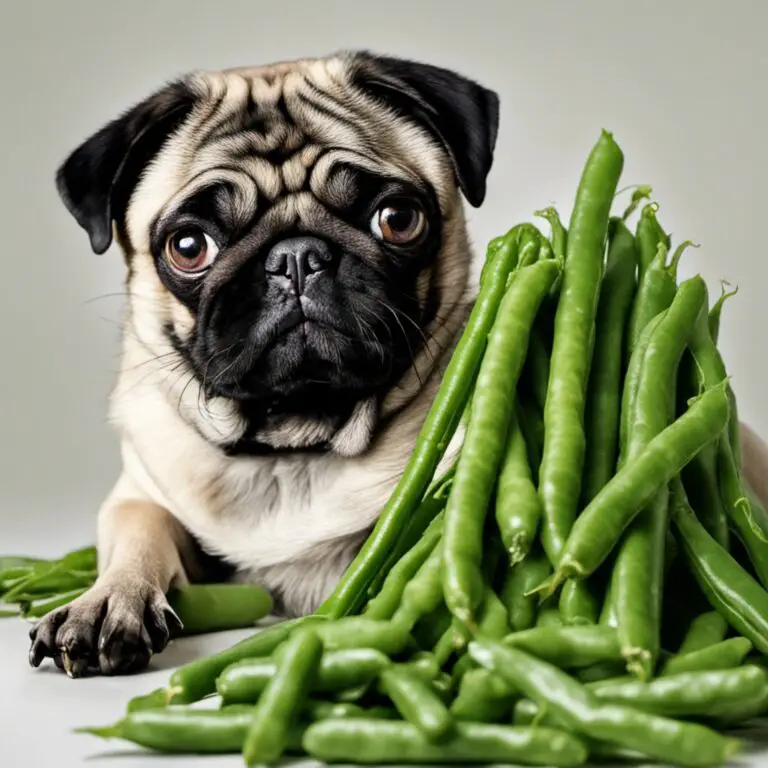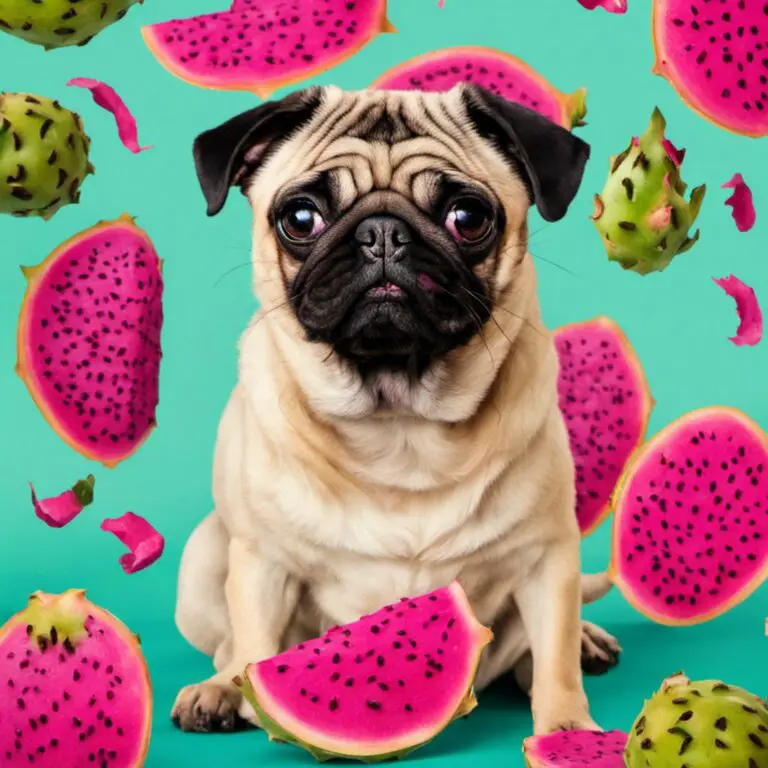Can Pugs Eat Bread? A Clear Guide for Dog Owners
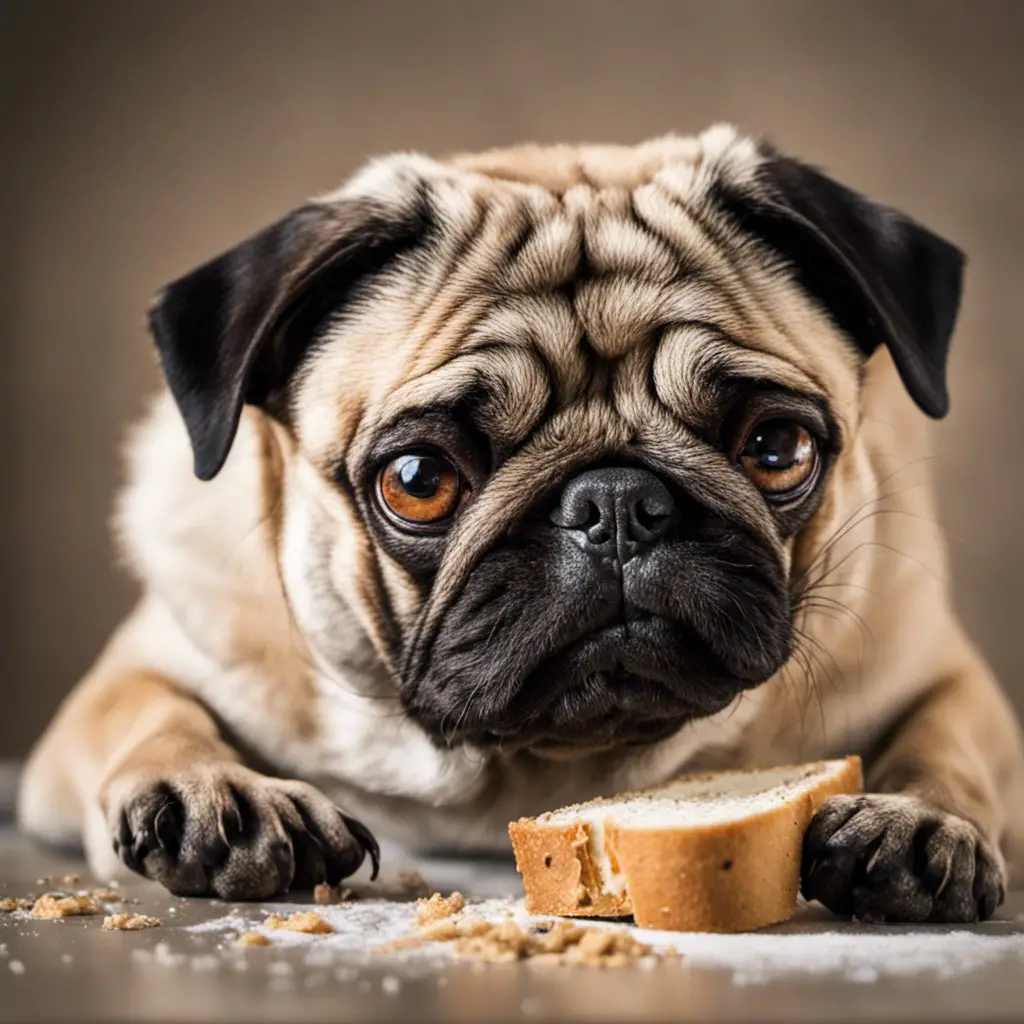
As pug owners, it’s essential to understand the nutritional needs of these adorable little dogs. One common question that often arises is whether pugs can eat bread. Bread is a staple food that can be found in many households, and pet parents may wonder if it’s safe to share a slice with their furry companion.
The answer to this question is that, yes, pugs can eat bread in moderation. Plain white and wheat bread are generally safe for dogs, including pugs, to consume. However, it’s essential to avoid feeding your pug any bread that contains potentially harmful ingredients, such as raisins, onions, or garlic, as these might be toxic to them.
When feeding bread to your pug, remember to do so in small amounts and keep an eye on their overall diet to ensure they receive the proper nutrients for their health and well-being.
Contents
Table of Contents
The Pug’s Diet

Natural Nutrients Needed
Pugs, like other dogs, require a well-balanced diet to maintain their overall health. They need a mix of protein, fiber, vitamins, minerals, and antioxidants in their diet. Sources of protein for pugs include meat and eggs, which provide essential amino acids necessary for growth and muscle development. Fiber can be found in vegetables and some fruits, helping to maintain digestive health. Vitamins and minerals are vital for various body functions, and antioxidants help protect cells from damage.
Get The Free Food Eating Guide That Keeps My Pug Happy and Playful Even at 13 Years Old
100% Beginner Friendly & Lists Real Foods Your Pug Can Actually Eat!
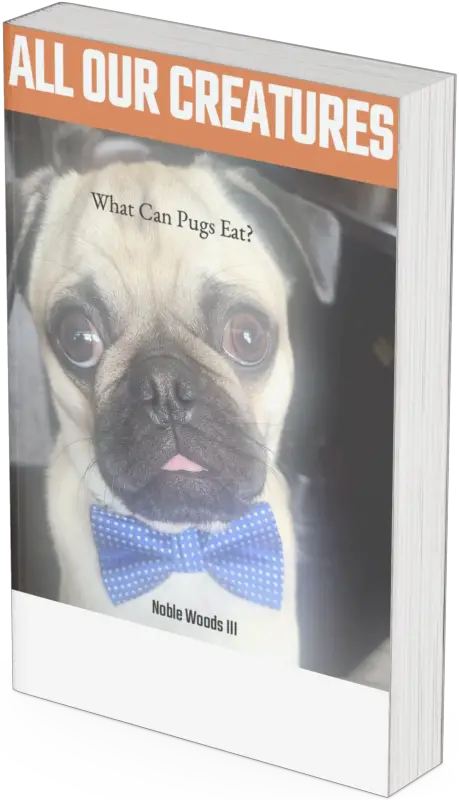
It is essential to consult with a veterinarian to determine the appropriate nutrient proportions for your pug, as individual needs may vary based on age, size, and activity level.
Commercial and Homemade Food
There are two primary options for feeding your pug: commercial dog food and homemade meals. When choosing a commercial dog food, look for one specifically formulated for pugs or small dog breeds, like the Royal Canin Breed Health Nutrition Pug Dry Dog Food. This type of food is designed to meet their unique nutritional requirements and can help prevent health problems. Make sure to follow the feeding guidelines on the packaging and adjust as necessary based on your pug’s weight and activity level.
Homemade meals can also be a nutritious option for your pug, as they allow for more control over ingredients and can be tailored to their specific needs. However, it’s crucial to ensure that homemade meals provide the right balance of nutrients. When preparing homemade meals, include a variety of protein sources, such as meat, eggs, and fish, as well as an assortment of vegetables that are safe for pugs to eat, like carrots, green beans, and sweet potatoes. Avoid feeding your pug foods that can be harmful, such as avocado.
Whether you choose to feed your pug commercial or homemade food, it’s essential to consult with your veterinarian to develop a suitable meal plan for your pug, addressing their unique dietary needs and preventing potential health issues.
Pugs and Bread Consumption
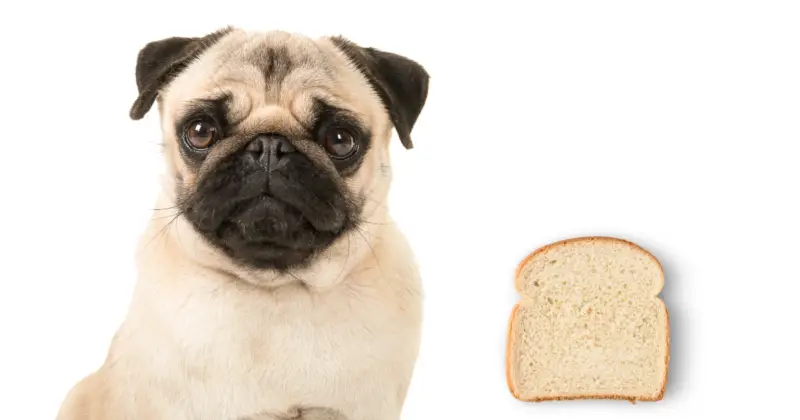
Benefits of Bread
Bread can be a safe snack for pugs when given in moderation. Most types of plain white and wheat bread provide carbohydrates, which serve as an energy source for your pug. Additionally, bread contains a small number of calories, making it a low-calorie treat when compared to some other high-fat human foods. The relatively low sodium and added sugar content in simple bread may also lessen its potential negative impact on a pug’s digestive system.
Risks of Bread
While bread is not inherently dangerous for pugs, overconsumption can lead to health problems. Excessive intake of carbs and calories can cause weight gain, which is already a concern for pug owners due to the breed’s predisposition toward obesity. High sodium and added sugar levels found in some bread varieties can also pose risks when consumed in large amounts, potentially leading to increased blood pressure and other health issues.
Pugs have unique anatomical features, like their short, blunt snouts, that can make it challenging to recognize potential digestive problems stemming from bread intake. Ensuring that you feed your pug small portions of bread as an occasional treat rather than a staple in their diet will help prevent any negative side effects associated with bread consumption.
Understanding Safe and Toxic Foods for Pugs

Commonly Toxic Foods
It’s important to be aware of the toxic foods that can cause harm to your pug. Some of the most common toxic foods include chocolate, grapes, raisins, onions, garlic, macadamia nuts, avocado, and caffeine. These foods contain substances that are poisonous to pugs, and consuming them can lead to theobromine poisoning, gastrointestinal distress, and other health issues.
Chocolate, for instance, contains a substance called theobromine which is toxic to pugs. It is a common cause of poisoning and should be avoided at all costs. Another common toxic food, grapes and raisins, can cause serious kidney damage and should never be given to your pug.
Foods like onions, garlic, macadamia nuts, avocado, and those containing caffeine are also toxic and can lead to symptoms such as vomiting, diarrhea, lethargy, and an increased heart rate.
Safe Human Foods for Pugs
Despite the long list of potentially toxic foods, there are still plenty of safe, human foods that your pug can enjoy. Some safe human foods for pugs include:
- Carrots: Just like humans, pugs can benefit from the fiber and beta-carotene found in carrots, which can be enjoyed as a low-calorie snack in moderation.
- Fruits: Fruits such as apples (seedless), bananas, and blueberries can make for a tasty and healthy treat for your pug, provided they are given in small amounts.
- Vegetables: Broccoli, cucumbers, and bell peppers are just a few of the vegetables that pugs can enjoy, adding some beneficial vitamins and minerals to their diet.
Keep in mind that when feeding your pug human food, moderation and portion control are key. Stick to small and easily digestible portions to ensure they maintain a healthy weight and reduce the risk of gastrointestinal issues.
Potential Health Risks and Symptoms of Toxic Consumption
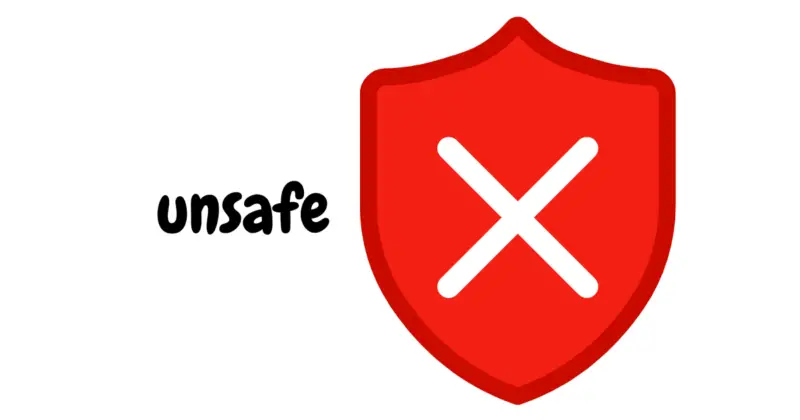
Pugs, like other dog breeds, should not consume certain human foods that can be toxic or harmful to their health. Ingesting harmful foods can lead to a variety of symptoms in pugs, ranging from mild discomfort to life-threatening conditions.
Common Symptoms
When a pug consumes a toxic item, they may exhibit symptoms such as:
- Vomiting
- Diarrhea
- Weakness
- Seizures
- Difficulty breathing
- Lethargy
- Abdominal pain
- Elevated heart rate
These symptoms may vary depending on the type and amount of toxic substance ingested.
Emergency Action
If your pug exhibits any of the symptoms listed above after consuming a potentially toxic item, you should consult your vet immediately. Symptoms like seizures, difficulty breathing, and an elevated heart rate can signal a life-threatening emergency.
In cases where your regular vet is not available, consider taking your pug to an emergency vet. It is crucial to act quickly when a pug ingests a toxic substance, as early intervention can greatly improve the odds of a successful recovery.
When contacting the vet, provide as much information as possible about the ingested item and the timeline of events. This will help the vet determine the most appropriate course of treatment for your pug.
Can Pugs Eat Bread?
Moderation and Diet Diversity
Occasional Treats
While bread can be a safe snack for pugs, it’s important to remember that moderation is key. Feeding your pug bread as an occasional treat is fine, but be cautious not to overdo it. Other safe and healthy occasional treats for pugs can include fruits such as small pieces of apple or banana, vegetables like steamed broccoli or baby carrots, and even small amounts of cooked lean meats, like ham and chicken. Always remove any seeds, cores, and peels when offering fruits and vegetables to avoid potential choking hazards.
Incorporating Different Foods
Pugs, like any other dog, can benefit from a diversified diet that includes not only their daily dog food but also a variety of other foods that contribute to their overall health and well-being. In addition to bread and the aforementioned treats, you can also consider offering your pug other nutritious foods such as:
- Cooked eggs: an excellent source of protein and healthy fats
- Low-fat cheese: a good source of calcium and protein, just keep the portion sizes small
- Carrots: a low-calorie and crunchy treat that supports dental health
- Broccoli: rich in vitamins and minerals, just be careful not to overdo it, as too much broccoli can cause digestive issues for some dogs
Remember to keep the servings of these treats small and to use them as a way to supplement your dog’s regular diet. Offering a variety of foods can help ensure they are consuming a well-rounded diet, predominantly consisting of their usual high-quality dog food.
Dealing with Allergies and Food Sensitivities
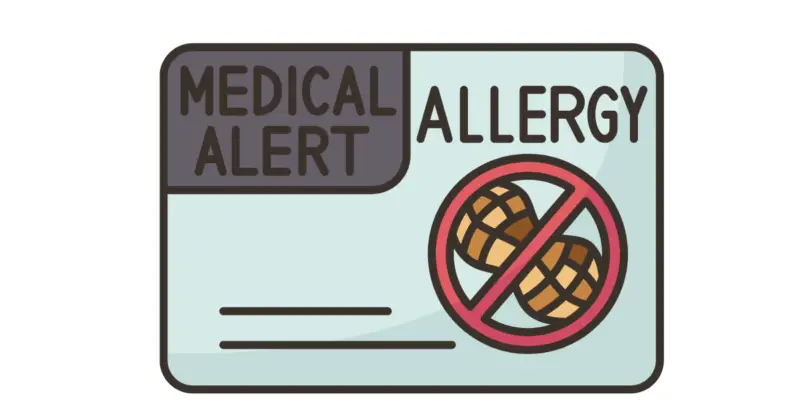
Identifying Food Allergies
Allergies in pugs can manifest in various ways, but some common symptoms to watch for include skin irritations, excessive itching, and gastrointestinal problems. If you notice any of these symptoms in your pug after eating certain types of food, such as bread, it’s essential to consult with a veterinarian to determine the specific allergens causing the issues.
It’s important to differentiate true food allergies from food sensitivities and intolerance, which may display similar symptoms but are not necessarily caused by an immune response to the allergen. A veterinarian can help you identify your dog’s specific issues and provide appropriate guidance for managing their diet.
Creating an Allergy-Friendly Diet
Once you’ve identified your pug’s allergens, it’s crucial to create an allergy-friendly diet that avoids these specific triggers. Some pugs may suffer from allergies to particular grains, such as wheat, which is a common ingredient in bread. In these cases, you may need to consider grain-free alternatives or bread made with alternative grains.
One option to help pugs with allergies is to introduce chewable allergy supplements, like the Zesty Paws Allergy Immune Bites, which have a high number of positive reviews. These supplements can help support the immune system and potentially reduce allergy symptoms.
Another approach is to explore hypoallergenic dog food options, such as Simply Nourish: Fisherman’s Finest, which is formulated for dogs with allergies to meat proteins, potatoes, and various grains. This type of diet can help manage your pug’s symptoms while still providing them with the necessary nutrients.
When creating an allergy-friendly diet for your pug, remember to consult with your veterinarian for guidance and best practices. They will help ensure that your dog’s nutritional needs are met, and their allergy symptoms are successfully managed.
Final Thoughts: Can Pugs Eat Bread

Bread can be a part of a pug’s diet, but it should be given in moderation. Although bread is generally safe for dogs, there are a few risks and considerations to be aware of before incorporating it into your pug’s meals.
Firstly, ensure that the bread you offer to your pug does not contain toxic ingredients, such as raisins, chocolate, or xylitol, which can be harmful to dogs. Plain bread, like white or wheat, is a safer choice. Additionally, avoid feeding your pug moldy bread as it can pose serious health risks.
While it’s safe for pugs to consume bread, it should not be a significant part of their diet. Bread is high in carbohydrates and low in essential nutrients that pugs need for a healthy and balanced diet. Overconsumption of bread can lead to obesity and other health issues in pugs due to its high caloric content and low nutritional value.
In place of bread, consider incorporating healthier options like fresh fruits and vegetables that provide essential nutrients to your pug’s diet. For instance, carrots and bananas are excellent sources of vitamins and minerals that pugs require for optimal health.
Remember to always monitor your pug’s reaction after introducing any new food to their diet, as they may have individual sensitivities or allergies, which may not be immediately apparent. It’s crucial to observe and adjust your pug’s diet according to their specific needs and requirements.
In summary, bread can be an occasional treat for your pug, but it should not be their main source of nutrition. Keep the servings limited and choose plain bread to avoid any potential risks. Ultimately, a healthy and diverse diet will contribute to the happiness and wellbeing of your precious pug.
Frequently Asked Questions
Can pugs safely consume bread?
Pugs can safely eat bread in moderation, as it is not toxic to them. However, it’s essential to make sure the bread doesn’t contain any harmful ingredients such as excessive sugars, salts, or toxic additives like xylitol. Giving your pug small pieces of plain bread occasionally should be fine.
Is yeast harmful to pugs?
Yes, yeast can be harmful to pugs. Uncooked bread dough containing active yeast can cause serious health issues in dogs. The yeast in the dough can ferment and produce alcohol, leading to alcohol poisoning, and the dough can also expand, causing a life-threatening condition called bloat. Always ensure that the bread you give your pug is fully baked and free of active yeast.
Can pugs eat different types of bread?
Pugs can eat various types of bread, but it’s essential to be cautious. Some bread varieties may contain ingredients that could be harmful to your pug, such as raisins or nuts. Generally, it is best to stick with plain white or whole wheat bread without any added ingredients like garlic or onion.
Is bread with cheese or butter okay for pugs?
It’s essential to be cautious when giving your pug bread with cheese or butter. Cheese can be high in fat, which can contribute to obesity and pancreatitis. Butter is also high in fat and salt, making it unsuitable for pugs. If you choose to give your pug bread with these toppings, do so sparingly and ensure it does not become a regular part of their diet.
How much bread can a pug consume?
As bread is not a necessary part of your pug’s diet and offers minimal nutritional value, it should only be given in small amounts. You can offer your pug a small piece of bread occasionally as a treat, but it should not make up a significant portion of their diet. It is essential to ensure that your pug maintains a balanced diet with appropriate amounts of protein, fat, and other nutrients.
Can pugs have bread for an upset stomach?
In some cases, bread can help soothe a pug’s upset stomach. However, it’s always best to consult your veterinarian for specific recommendations based on your pug’s condition. If your pug is experiencing persistent stomach issues, it may require a more comprehensive evaluation and treatment plan from your vet.

